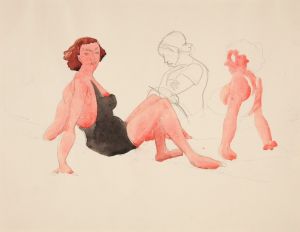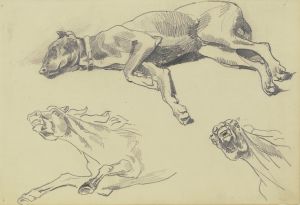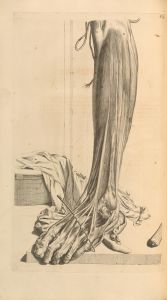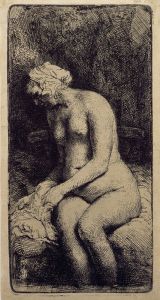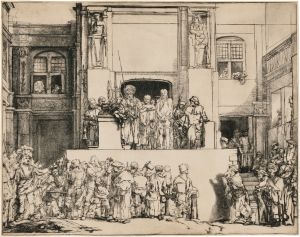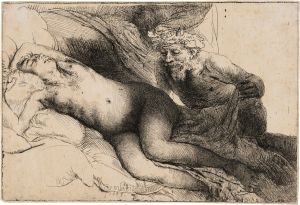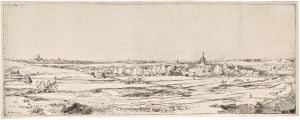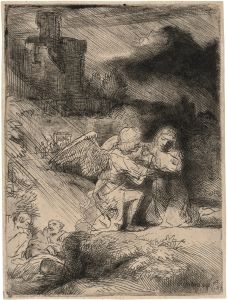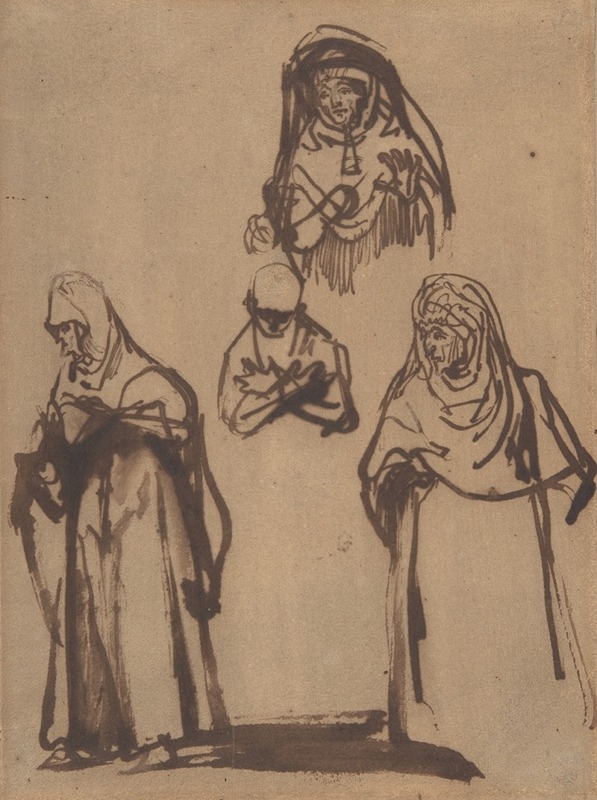
Study Sheet with Three Women and a Boy
A hand-painted replica of Rembrandt van Rijn’s masterpiece Study Sheet with Three Women and a Boy, meticulously crafted by professional artists to capture the true essence of the original. Each piece is created with museum-quality canvas and rare mineral pigments, carefully painted by experienced artists with delicate brushstrokes and rich, layered colors to perfectly recreate the texture of the original artwork. Unlike machine-printed reproductions, this hand-painted version brings the painting to life, infused with the artist’s emotions and skill in every stroke. Whether for personal collection or home decoration, it instantly elevates the artistic atmosphere of any space.
"Study Sheet with Three Women and a Boy" is a drawing by the renowned Dutch artist Rembrandt van Rijn. This work is part of Rembrandt's extensive oeuvre of drawings, which showcase his exceptional skill in capturing human figures and expressions with remarkable detail and sensitivity.
Rembrandt Harmenszoon van Rijn, born on July 15, 1606, in Leiden, Netherlands, is considered one of the greatest visual artists in the history of art and the most important in Dutch art history. His contributions to art include paintings, etchings, and drawings, with his works spanning various genres, including portraits, landscapes, and narrative scenes.
The drawing "Study Sheet with Three Women and a Boy" is executed in pen and ink, a medium that Rembrandt frequently employed in his sketches and studies. This particular piece is notable for its depiction of four figures: three women and a boy. The figures are rendered with a keen eye for detail and a deep understanding of human anatomy and movement, which are hallmarks of Rembrandt's draftsmanship.
In this study, Rembrandt captures the figures in various poses and expressions, suggesting that the drawing may have been created as a preparatory study for a larger composition or simply as an exercise in capturing the human form. The women and the boy are depicted with a sense of immediacy and spontaneity, characteristic of Rembrandt's approach to drawing. The fluidity of the lines and the variation in the application of ink demonstrate his mastery in conveying texture, light, and shadow.
The exact date of the drawing is not definitively known, but it is generally attributed to Rembrandt's mature period, around the mid-17th century. During this time, Rembrandt was at the height of his artistic powers, producing some of his most celebrated works. His drawings from this period often reflect his interest in everyday life and his ability to imbue ordinary subjects with profound emotional depth.
"Study Sheet with Three Women and a Boy" is part of the collection of the British Museum in London, which houses an extensive collection of Rembrandt's drawings and prints. The British Museum acquired this drawing as part of its efforts to preserve and showcase the works of significant artists from history. The drawing is an important example of Rembrandt's skill as a draughtsman and his ability to capture the essence of his subjects with minimal means.
Rembrandt's drawings, including "Study Sheet with Three Women and a Boy," continue to be studied and admired for their technical excellence and their insight into the artist's creative process. They offer a glimpse into the mind of one of history's greatest artists and provide valuable context for understanding his more finished works.
In summary, "Study Sheet with Three Women and a Boy" is a testament to Rembrandt van Rijn's extraordinary talent as a draughtsman. The drawing exemplifies his ability to depict human figures with remarkable clarity and emotion, making it a significant piece within his body of work and an important artifact in the study of art history.






